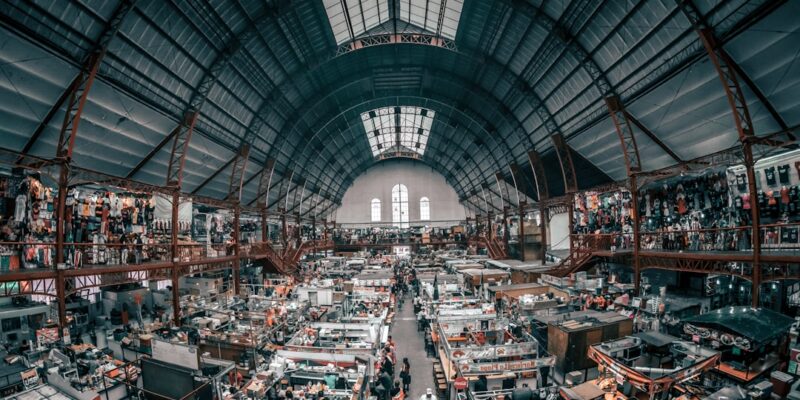
Discover Marrakech’s Cultural Immersion Experiences
Marrakech, the vibrant city located in the heart of Morocco, is a destination that offers a plethora of cultural immersion experiences. Known for its rich history, stunning architecture, flavorful cuisine, bustling souks, and warm hospitality, Marrakech is a city that captivates the senses and leaves a lasting impression on visitors. Cultural immersion experiences are essential for travelers who want to truly understand and appreciate the local culture, traditions, and way of life. By engaging in these experiences, visitors can gain a deeper understanding of Marrakech’s cultural significance and create meaningful connections with the local community.
Key Takeaways
- Marrakech offers a range of cultural immersion experiences, from exploring the Medina to indulging in local cuisine.
- The city’s rich history and architecture are worth discovering, with stunning examples of Islamic art and design.
- Haggling is an art form in Marrakech, and visitors can learn to navigate the souks and negotiate for unique treasures.
- A traditional hammam spa experience is a must-try, offering relaxation and rejuvenation in a centuries-old setting.
- Visitors can also learn about Moroccan calligraphy, music and dance, and meet local artisans to gain a deeper understanding of the city’s culture and traditions.
Exploring the Medina: A Journey Through the Heart of Marrakech
The Medina, Marrakech’s historic city center, is a UNESCO World Heritage site and a must-visit destination for cultural immersion. This labyrinthine maze of narrow streets, bustling markets, and stunning architecture is a true reflection of the city’s rich history and vibrant culture. A guided tour of the Medina allows visitors to explore its hidden gems, such as the Bahia Palace, the Koutoubia Mosque, and the Saadian Tombs. These architectural marvels showcase the intricate craftsmanship and unique architectural styles that have shaped Marrakech over the centuries.
Navigating the Medina can be overwhelming for first-time visitors, but with a few tips, it becomes an exciting adventure. It’s important to wear comfortable shoes and dress modestly to respect local customs. Hiring a local guide is highly recommended as they can provide valuable insights into the history and culture of Marrakech while helping navigate through the maze-like streets. It’s also advisable to carry a map or use a GPS-enabled device to avoid getting lost.
Discovering the Rich History and Architecture of the City
Marrakech has a fascinating history that dates back over a thousand years. Founded in 1062 by the Almoravid dynasty, the city has been influenced by various civilizations, including the Berbers, Arabs, and French. This rich history is reflected in the city’s architecture, which is a blend of Islamic, Moorish, and Andalusian styles.
One of the most iconic landmarks in Marrakech is the Koutoubia Mosque, with its towering minaret that dominates the city’s skyline. Built in the 12th century, it is a masterpiece of Almohad architecture and serves as a symbol of Marrakech’s religious and cultural heritage. Another architectural gem is the Bahia Palace, a stunning example of Moroccan architecture with its intricate tilework, carved cedar ceilings, and beautiful gardens.
Preserving Marrakech’s architectural heritage is of utmost importance to ensure that future generations can appreciate and learn from its rich history. Efforts are being made to restore and maintain historical buildings and landmarks, and visitors are encouraged to support these initiatives by visiting and learning about these sites.
Indulging in the Flavors of Marrakech: A Culinary Adventure
| Course | Ingredients | Preparation Time | Serving Size |
|---|---|---|---|
| Harira Soup | Tomatoes, lentils, chickpeas, onions, celery, parsley, cilantro, spices | 1 hour | 4-6 people |
| Tajine | Chicken, lamb, beef, vegetables, spices, preserved lemons, olives | 2 hours | 4-6 people |
| Couscous | Couscous, vegetables, chickpeas, raisins, spices | 30 minutes | 4-6 people |
| Mint Tea | Green tea, fresh mint, sugar | 10 minutes | 4-6 people |
Moroccan cuisine is renowned for its bold flavors, aromatic spices, and diverse influences. In Marrakech, visitors have the opportunity to embark on a culinary adventure and sample some of the city’s most delicious dishes. From hearty tagines to fragrant couscous, Moroccan cuisine offers a wide range of flavors that will tantalize your taste buds.
Some popular dishes to try in Marrakech include the iconic Moroccan mint tea, which is a symbol of hospitality and is often served with sweet pastries. Another must-try dish is the traditional Moroccan tagine, a slow-cooked stew made with meat or vegetables and flavored with a blend of spices such as cumin, turmeric, and saffron. For those with a sweet tooth, Moroccan pastries like baklava and chebakia are a must-try.
To fully immerse yourself in the culinary culture of Marrakech, consider joining a food tour or taking a cooking class. These experiences allow you to learn about the ingredients, techniques, and traditions behind Moroccan cuisine while enjoying delicious meals prepared by local chefs.
The Art of Haggling: Navigating the Souks of Marrakech
No visit to Marrakech is complete without exploring the vibrant souks, or markets, that are scattered throughout the Medina. These bustling marketplaces are a treasure trove of handmade crafts, textiles, spices, and traditional Moroccan goods. Navigating the souks can be an overwhelming experience, but it’s also an opportunity to practice the art of haggling and negotiate prices with local vendors.
When haggling in the souks, it’s important to approach it as a friendly and respectful exchange. Start by asking for the price and then make a counteroffer that is lower than what you’re willing to pay. Be prepared for some back-and-forth negotiation until you reach a mutually agreed-upon price. Remember to be patient and enjoy the process, as haggling is an integral part of the Moroccan shopping experience.
It’s also important to be aware of the local customs and etiquette when shopping in the souks. Dress modestly and be respectful of the vendors’ time and space. Avoid touching items unless you’re genuinely interested in purchasing them, as it’s considered rude to handle merchandise without the intention to buy.
Experiencing the Traditional Hammam: A Relaxing Spa Experience
A hammam is a traditional Moroccan steam bath that offers a unique spa experience for visitors. It is not only a place for relaxation but also an important part of Moroccan culture and hygiene rituals. The hammam experience typically involves a series of cleansing rituals that include exfoliation, steam baths, and massages.
The benefits of a hammam experience go beyond physical relaxation. It is also a cultural immersion experience that allows visitors to connect with Moroccan traditions and customs. The steam and heat of the hammam help to cleanse the body and open the pores, leaving the skin feeling refreshed and rejuvenated.
There are several hammam spas in Marrakech that offer authentic and luxurious experiences. These spas often use traditional Moroccan products such as black soap, argan oil, and rose water. It’s recommended to book a hammam session in advance to secure a spot, as they can be quite popular among tourists.
Learning the Art of Moroccan Calligraphy: A Cultural Workshop
Moroccan calligraphy is an ancient art form that has been practiced for centuries. It is not only a form of artistic expression but also a way to preserve the Arabic language and Islamic traditions. Marrakech offers visitors the opportunity to learn this beautiful art form through calligraphy workshops.
During these workshops, participants can learn about the history and techniques of Moroccan calligraphy from skilled artisans. They will be guided through the process of writing Arabic letters and creating intricate designs using traditional calligraphy tools such as reed pens and ink. These workshops provide a hands-on experience that allows visitors to appreciate the precision and skill required to create beautiful calligraphic art.
Several calligraphy workshops are available in Marrakech, ranging from introductory sessions for beginners to more advanced classes for those with prior experience. These workshops not only provide a unique cultural experience but also offer an opportunity to create personalized souvenirs to take home.
Discovering the Music and Dance of Morocco: A Performance Experience
Morocco has a rich musical heritage that blends Arab, Berber, and African influences. Traditional Moroccan music is characterized by its rhythmic beats, melodic tunes, and soulful vocals. Marrakech offers visitors the chance to experience this vibrant music scene through live performances and cultural shows.
Gnawa music, a genre that originated from the Gnawa people of Morocco, is particularly popular in Marrakech. This spiritual and rhythmic music is often accompanied by traditional instruments such as the guembri (a three-stringed lute) and the qraqeb (metal castanets). Attending a Gnawa music performance is a unique cultural experience that allows visitors to immerse themselves in the hypnotic rhythms and energetic atmosphere.
In addition to music, traditional Moroccan dance is also an integral part of the country’s cultural heritage. The most famous dance form is the belly dance, which is characterized by graceful movements and intricate hip isolations. Marrakech offers several venues where visitors can enjoy live music and dance performances, providing an opportunity to witness the beauty and artistry of Moroccan performing arts.
Meeting the Local Artisans: A Visit to the Marrakech Craftsmen Association
Marrakech has a thriving artisan community that produces exquisite handicrafts and traditional goods. From intricate woodwork to vibrant textiles, these artisans play a crucial role in preserving Moroccan craftsmanship and cultural heritage. Visitors can support these local artisans by visiting their workshops and cooperatives.
The Marrakech Craftsmen Association is an organization that promotes and supports local artisans. It provides a platform for artisans to showcase their work and connect with visitors who are interested in purchasing authentic Moroccan handicrafts. By visiting these workshops and cooperatives, visitors can witness the skill and dedication that goes into creating these beautiful works of art.
It’s important to remember that haggling is not appropriate when purchasing directly from artisans, as it undermines their livelihood. Instead, it’s recommended to pay a fair price for their craftsmanship and appreciate the value of their work.
Celebrating Moroccan Festivals: A Cultural Celebration in Marrakech
Morocco is known for its vibrant festivals that celebrate various aspects of its culture, traditions, and religious heritage. Marrakech is a city that comes alive during these festivals, offering visitors a unique opportunity to experience the joy and excitement of Moroccan celebrations.
One of the most popular festivals in Marrakech is the Marrakech Popular Arts Festival, also known as the National Folklore Festival. This week-long event showcases traditional music, dance, and crafts from different regions of Morocco. Visitors can witness colorful parades, lively performances, and traditional ceremonies that highlight the diversity and richness of Moroccan culture.
Another festival worth experiencing is the Marrakech International Film Festival, which attracts filmmakers, actors, and film enthusiasts from around the world. This prestigious event showcases a selection of international films and offers a platform for emerging talent in the film industry.
Marrakech offers a wide range of cultural immersion experiences that allow visitors to connect with the city’s rich history, traditions, and way of life. From exploring the Medina to indulging in the flavors of Moroccan cuisine, there are countless opportunities to learn, engage, and appreciate the vibrant culture of Marrakech. By participating in these experiences, travelers can gain a deeper understanding of Moroccan culture and create lasting memories. Cultural travel is not only a way to broaden our horizons but also an opportunity to foster mutual understanding and respect among different cultures. So why not pack your bags and embark on a journey to Marrakech to experience its rich cultural heritage firsthand?
FAQs
What is cultural immersion?
Cultural immersion is the act of fully engaging in the customs, traditions, and lifestyle of a particular culture.
What is Marrakech?
Marrakech is a city in Morocco, located in North Africa.
What are some cultural immersion experiences in Marrakech?
Some cultural immersion experiences in Marrakech include visiting the souks (markets), trying traditional Moroccan cuisine, attending a traditional Moroccan tea ceremony, and visiting historical landmarks such as the Bahia Palace and the Koutoubia Mosque.
What is Moroccan cuisine?
Moroccan cuisine is a blend of Mediterranean, Arabic, and African influences. It often includes dishes such as tagine (a stew made with meat and vegetables), couscous (a grain dish), and harira (a soup).
What is a traditional Moroccan tea ceremony?
A traditional Moroccan tea ceremony involves the preparation and serving of mint tea, which is a staple in Moroccan culture. The tea is typically served in small glasses and is accompanied by sweet pastries or nuts.
What is the best time of year to visit Marrakech?
The best time of year to visit Marrakech is during the spring (March to May) or fall (September to November) when the weather is mild and comfortable. Summers can be very hot, while winters can be chilly and rainy.
What should I wear when visiting Marrakech?
Visitors to Marrakech should dress modestly, covering their shoulders and knees. It is also recommended to wear comfortable shoes for walking on uneven terrain in the souks and other areas.


















